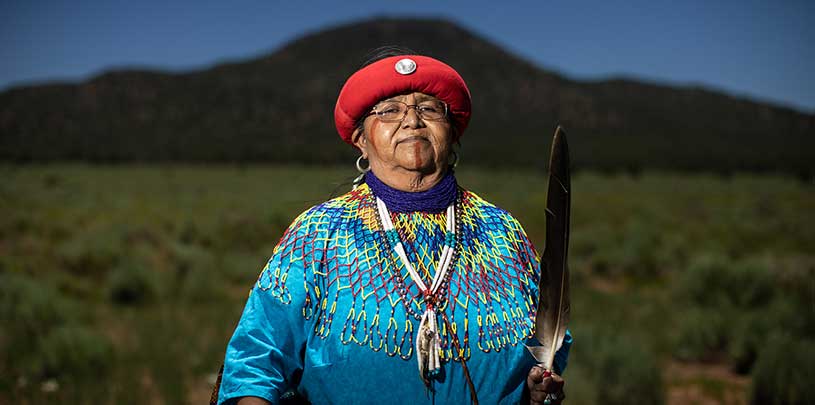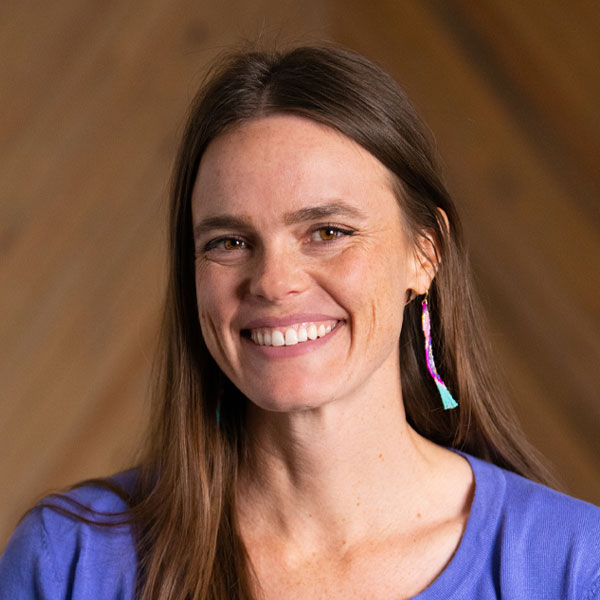
 by Amber Reimondo, Energy Director
by Amber Reimondo, Energy Director
Update: President Biden designated Baaj Nwaavjo I'tah Kukveni Grand Canyon National Monument on August 8, 2023. Learn more ›
The Grand Canyon and the plateaus above it have given life to Native peoples since time immemorial. Historically these lands provided food, shelter, medicines, migration routes, and more for the Southwest’s earliest residents.
But the boundaries of Grand Canyon National Park fall short of protecting this broader cultural landscape, which continues to support Indigenous lifeways today. That’s why a coalition of tribes is calling on President Biden to designate Baaj Nwaavjo I’tah Kukveni Grand Canyon National Monument.
Divided into three parcels on the north and south rims of the Grand Canyon, the tribally proposed national monument would protect about a million acres of grasslands and forests that are full of traditional foods, medicinal plants, building materials, and more.
“This is all-powerful land of medicine,” says Havasupai Tribal Council member Dianna Sue White Dove Uqualla, while overlooking her ancestral homelands south of the Grand Canyon.
 Healthy sage grows near Red Butte in the south section of the proposed monument. AMY S. MARTIN.
Healthy sage grows near Red Butte in the south section of the proposed monument. AMY S. MARTIN.
Uqualla is a traditional practitioner. She’s happy to see the sweep of sagebrush at Red Butte — a traditional cultural property of the Havasupai Tribe located in the southern parcel of the proposed national monument — looking healthy. She strokes a sprig between her fingers, noticing the slender leaves are smaller than they used to be, which she attributes to drought.
“We forget to stop and look at the plants,” she says. “A lot of these plants are medicines.”
Sagebrush grows across much of the proposed Baaj Nwaavjo I’tah Kukveni Grand Canyon National Monument. The silvery-green shrub is part of the sunflower family, can reach heights of one to nine feet tall, and live up to 100 years. Traditionally, sage has been used to treat colds, improve breathing, and soothe aching joints.
Sap is another medicine that Uqualla says is used in a variety of ways.
“The trees are medicine. They have sap that we use to burn and smudge. We mix it with ochre to make a salve for wounds. If our horses or animals get sick, we use this for them too,” she says. “A lot of people question traditional medicines. They really work. I’ve seen what my family does with these medicines.”
Uqualla’s ancestors moved with the seasons, spending summers farming in the Grand Canyon and winters hunting and gathering in the pinyon and juniper forests on the South Rim.
Pine nuts — the buttery morsels hidden in pinyon pinecones — are rich in fat and protein. They have been a staple food for Native peoples in the Grand Canyon region for thousands of years.
According to Stuart Chavez, a former Havasupai Tribal Council member, the annual harvest of ko'o (pinyon in Havasupai) depends on rainfall in the previous year. Nowadays, pinyon trees tend to produce bumper crops every four to five years. And the nuts, he says, can be prepared in a variety of ways.
“One that the Havasupai people like to do is just eat the seed. They’ll bake it or cook it on top of the stove. Some people add them to stews — there’s a traditional dish that consists of elk meat, pinyon, and corn.”
Pinyon seeds are a favorite of animals too. Rabbits, mule deer, birds, and other small game find food and shelter in the pinyon and juniper forests south of the Grand Canyon. If designated, Baaj Nwaavjo I’tah Kukveni Grand Canyon National Monument would protect these ancestral hunting grounds.
 Native peoples also used juniper bark for cordage, sleeping mats, and more. BLAKE MCCORD.
Native peoples also used juniper bark for cordage, sleeping mats, and more. BLAKE MCCORD.
In addition to food, the forests that hug the rims of the Grand Canyon provide firewood and construction materials.
The shaggy bark of juniper trees makes excellent tinder, and its long-burning logs glow late into the night. Winter camps on the south rim of the Grand Canyon were usually located in thick stands of trees, where firewood was plentiful.
“We used the wood to burn fires to keep our homes warm,” says Uqualla. “We’d also heat rocks to take into the sweat [lodges].”
Uqualla gestures to the sagebrush meadow and surrounding pinyon and juniper forest near Red Butte that makes up the southern parcel of the proposed monument.
“We used everything to live,” she says. “The trees, the sap, the ground, the rocks, the animals — we’re all connected.”
From cultural staples like sagebrush and pinyon trees, to endangered plant species like the Brady pincushion cactus, the lands that make up Baaj Nwaavjo I’tah Kukveni Grand Canyon National Monument support an incredible web of life.
When Uqualla visits the lands her ancestors roamed, she says she doesn’t feel alone. She feels and hears the animal and plant spirits.
“This is medicine. The whole beauty, the abundance of it. This is medicine.”
President Biden designated Baaj Nwaavjo I'tah Kukveni – Ancestral Footprints of the Grand Canyon National Monument on August 8, 2023. Send a personal thank you to President Biden, Secretary Haaland, Secretary Vilsack, Sen. Sinema, Sen. Kelly, Rep. Grijalva, Rep. Gallego, and Rep. Stanton.
80% of Arizona voters support Baaj Nwaavjo I'tah Kukveni National Monument, according to a new poll.
Read MoreThe Colorado River below Glen Canyon Dam is heating up. Find out why.
Read MoreGroundwater pumping at a uranium mine near the Grand Canyon will affect the canyon's springs, scientists says.
Read More